For my up-cycling project I created a small soldering table. My up-cycling project aesthetic was Cybernetic Punk. It focuses on a hectic state of being terminally online, with motifs such as chaotic wires and cables, old computers, and confusing symbols and jargon. I choose this aesthetic for 2 main reasons. One is that I have a host of old circuit boards, wires, and electronic components at my disposal. The other is that I find this aesthetics commentary on how harsh poorly designed digital and physical interfaces can be with our ever increasingly frequent use of modern technology.
Functionally, this table needed to have enough room for my soldering Iron and any small electronic components I was working on. It also needed to be resistant to the heat of the solder and soldering iron, as well as being short enough to go next to my other work spaces which are all designed for use while sitting on the ground.
Aesthetically, this table needed to fit in with the aesthetic of the disassembled and customized electronic components that I would be placing on its surface. I also hoped that in highlighting the hectic elements of the Cybernetic Punk aesthetic I would encourage myself to design my electronic components better by providing an example of what they might feel like aesthetically if I didn’t.
In order to fabricate this table, I first started by creating the frame out of cardboard. The desired shape was mocked up in CAD from initial ideation sketches and then imported as an STL to Slicer for Fusion 360. This program allowed me to generate a set of interlocking cardboard panels that would follow the shape of the model. I exported these shapes as DWGs and used them to laser cut the desired cardboard panels. Originally, I had planned to make this table with a height of approximately 0.6 m, but due to material constraints from the quantity of cardboard I had, I had to scale it down to half size.
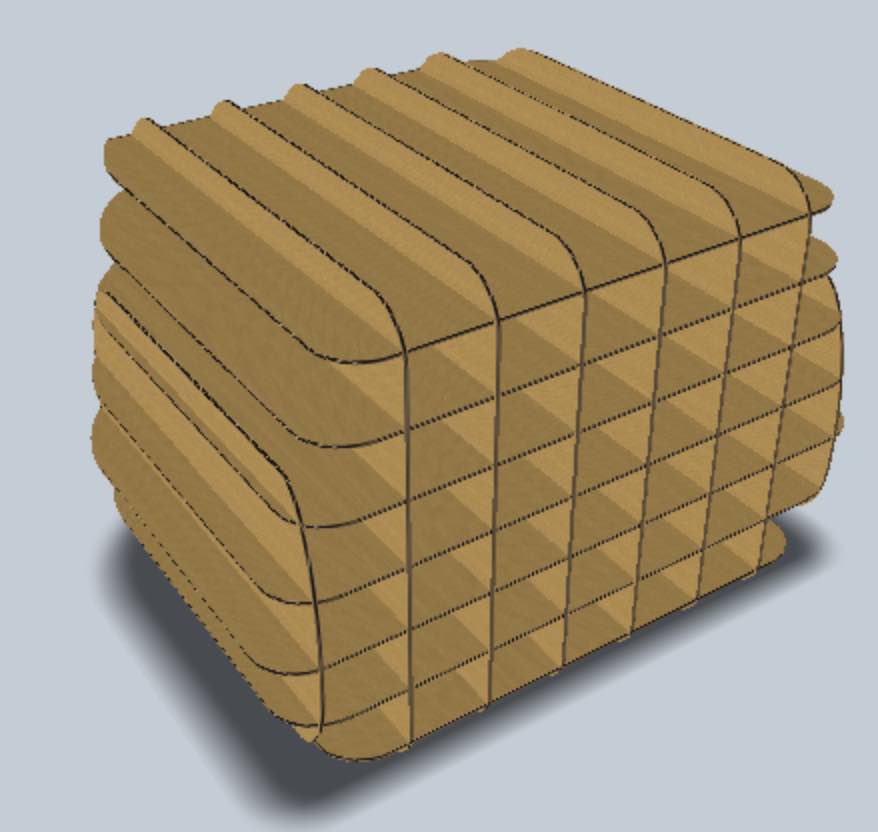 Figure 1: cardboard frame design
Figure 1: cardboard frame design
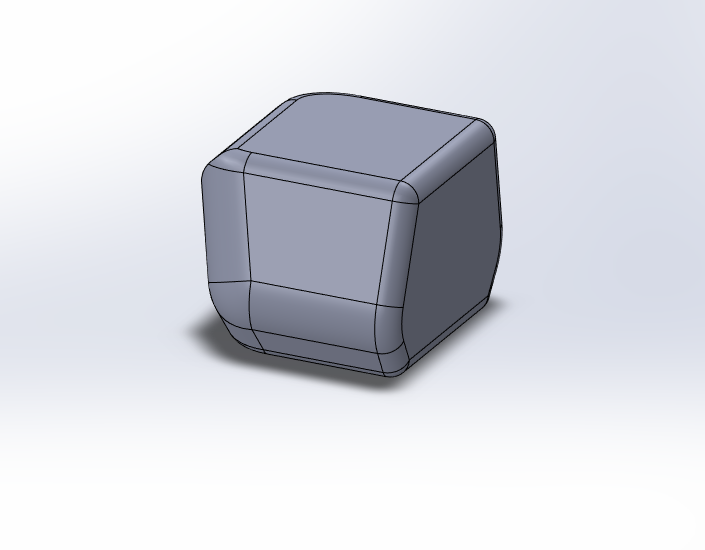
Figure 2: initial CAD of form

Figure 3: Processed DWG for Laser Cutting
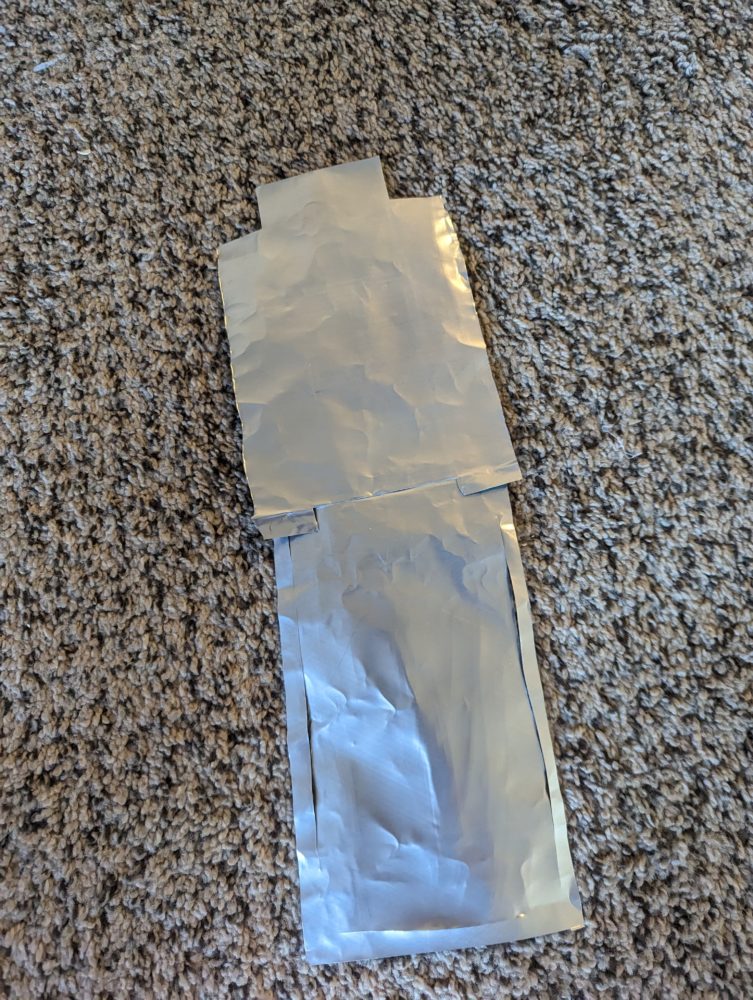
Figure 4: Attempted Method of Joining Aluminum Cans to Make Surface
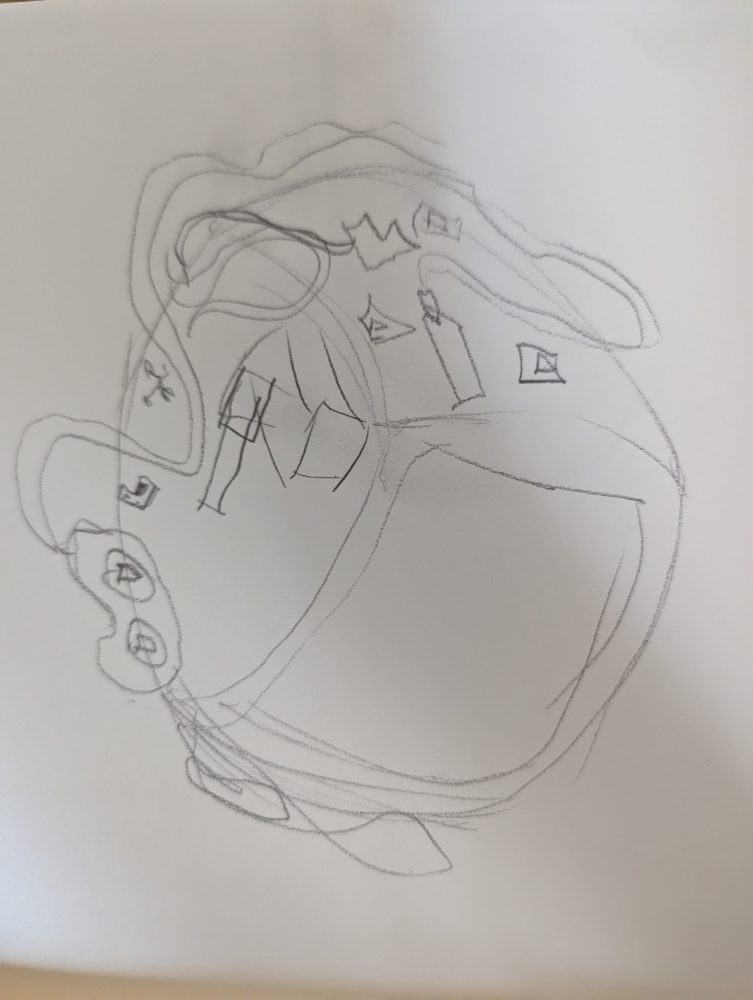
Figure 5: initial Ideation Sketch
After fabricating and assembling the base frame of the table, I set out to create the surface that would cover it. Originally, I had planned to use aluminum cans to create this surface by cutting them into specific shapes that would allow them to interlock and thoroughly cover the surface. However, the organic curves of the shape made this a lot more difficult than I had anticipated. In order to get better conformation to the frame’s shape, I opted to use many layers of aluminum foil, all sealed with Gorilla Glue at the base of the table.
Once the surface was covered, I set out to attach my scrap electronic components to the table. Initially I had planned to do this with nuts and bolts through holes drilled into the aluminum cans, but since I had opted for aluminum foil, this was no longer an option. After experimenting with gluing the circuits directly onto aluminum foil, and finding that this did not work well, I chose to use the wrapping of the components wires to secure them in place and glue the wire housing to the frame in key locations.
Finally, I realized I could improve my aesthetic goal of mimicking a monitor if I could make the front surface of the table black, like the screen of a monitor. In order to do this I attached some extra adhesive thermal insulation tape I had to the front surface.
Images of the final product are shown below, the mess of wires and fried circuits from old micro controllers, mice, and game controllers are wrapped to the shiny aluminum surface of the small curvy table, mostly along the side and top planes of the table. The shape is boxy yet curved at every edge and slightly asymmetrical. The front black surface of the foam insulator tape is the only mat surface, contrasting the surrounding aluminum. In total it alludes to cybernetic punk in its monitor-like shape and hecticly scattered wires and circuits.
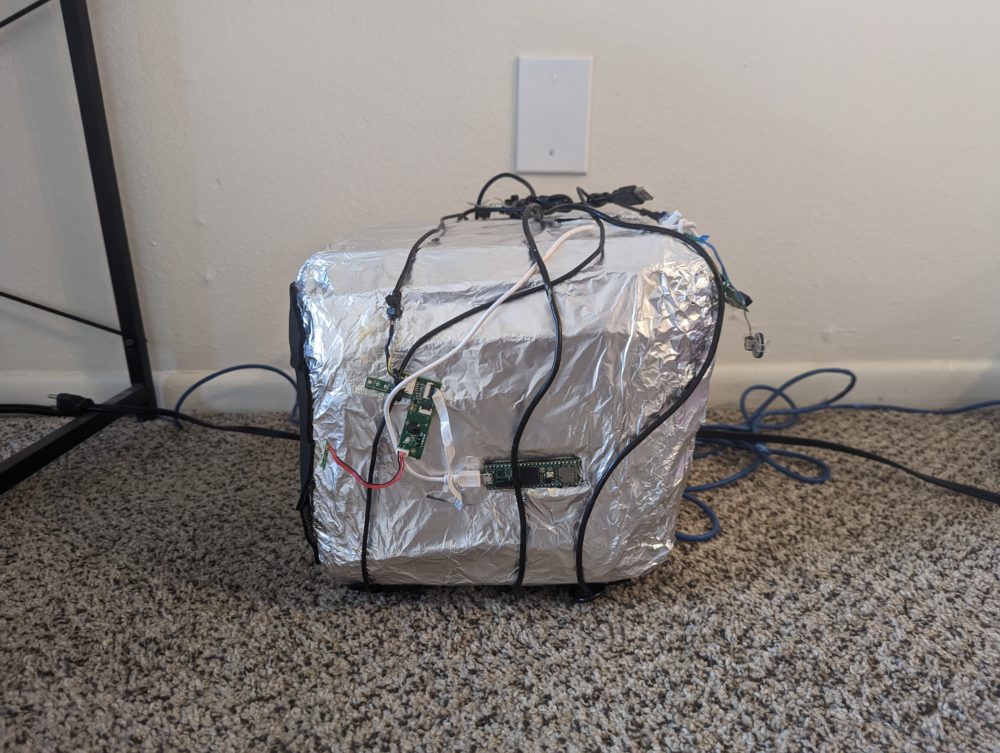
Figure 6: side view of final product
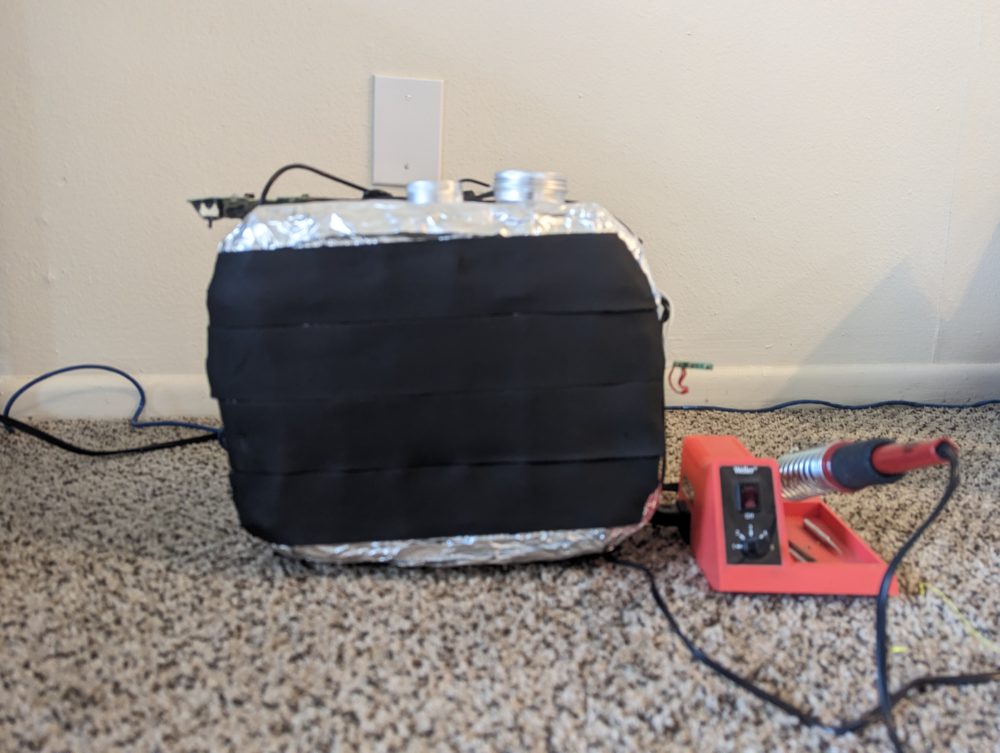
Figure 7: Front View of Final Product
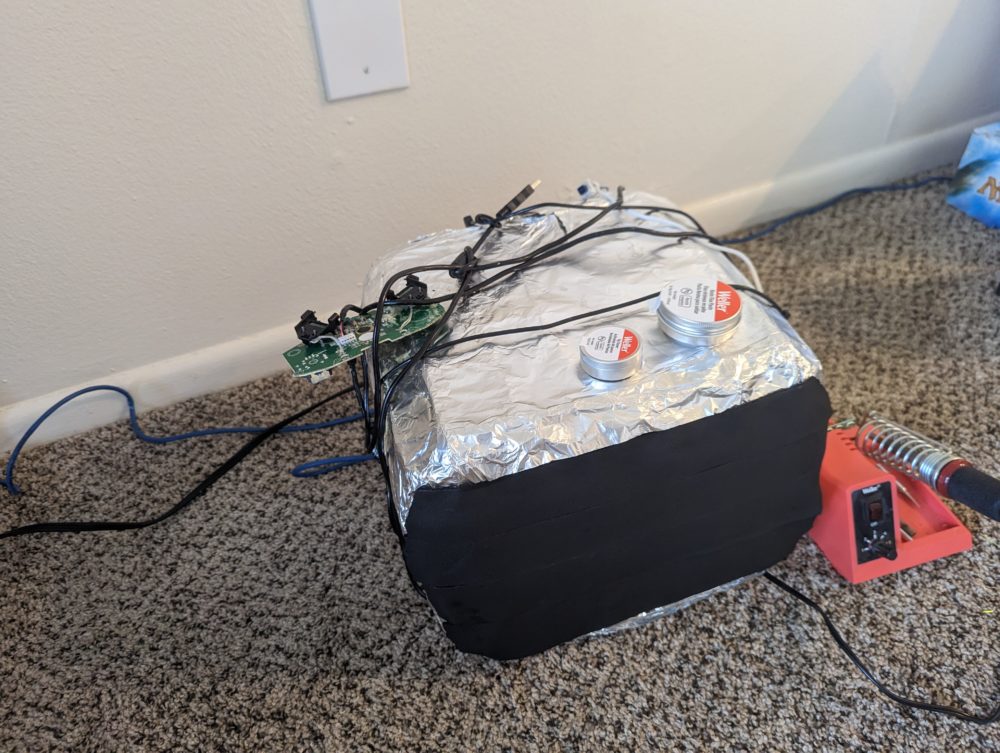
Figure 8: Final Product
The final table was functional to a degree, but less so than I had initially hoped for. Structurally the interlocked cardboard proved a solid base for the table and produced a surprisingly sturdy workspace. However, in using aluminum foil instead of aluminum cans for the surface, the goal of being completely resistant to the heat of the soldering iron was not met. Although the aluminum foil can handle stray solder well, consistent heat from the soldering iron can and will cause it to melt. Finally the addition of wires over the top surface reduced the working area so that it would be difficult to fit both my soldering iron and components to solder on the surface simultaneously. As a result, the table is usable, but requires notably more caution and care than the initially more robust design I was hoping for.
From an artistic standpoint, I am much more happy with the results of this project. The wiring and circuit boards attached to the frame feel hectic and jumbled. The frame shape is odd and boxy, and thanks to the addition of the thermal insulator, it looks visually similar to an old monitor. When I look at this table I feel inspired to make better, more aesthetic technology, to avoid the feelings this aesthetic invokes. The one artistic element I was not satisfied with was the aluminum foil. The foil’s texture, color, and reflective properties do not match the aesthetic of an old monitor. The way the foil shines, wrinkles and highlights the underlying frame feels much more like an aerospace object to me than an old computer monitor. If possible I would have preferred a surface that was matte, smooth and a beige color, but I do not think this element comprises the message of the piece.
In the future I hope to refine this object and solve both my aesthetic and functional issues. I plan to look into different recycled materials that I could coat the surface in as well as considering a different material for the top surface, so that my general surface material does not have to be constrained by thermal properties. I also hope to redo the decorative wires in a way that gives me more space on the top surface to work on. Finally, as I work with more electronic components, and inevitably damage some of them, I hope to keep adding to the decorative electronics of the piece.
Video Presentation: https://vimeo.com/801011612
Sources:
“CyberneticPunk.” Aesthetics Wiki, https://aesthetics.fandom.com/wiki/CyberneticPunk. Accessed 8 Feb. 2023.

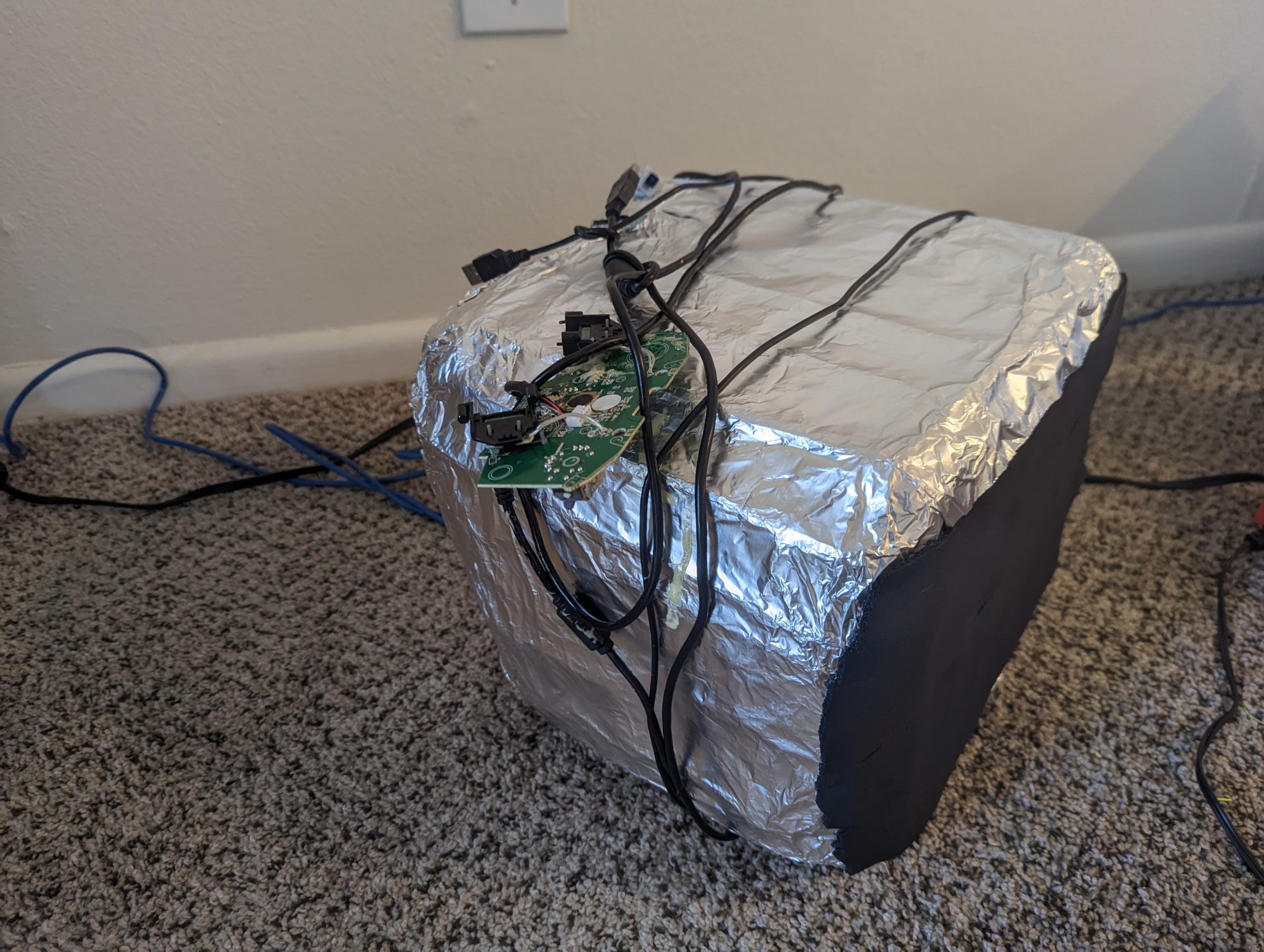
1 Comment. Leave new
I think you represented the cybernetic punk aesthetic well, and as more peripheral devices are added, it will certainly be enhanced. What materials are you considering for a coating for later potential prototypes? A ceramic or plastic might fit the old monitor aesthetic much better.